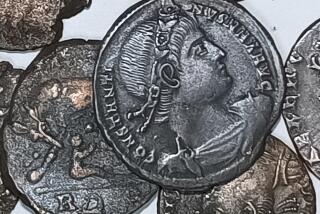Japan Starts Investigation of Fake Coins
TOKYO — Police officials said today that they plan to send investigators to Europe next week to try to trace the source of bogus Japanese gold coins with a face value of $71 million, Japan’s biggest counterfeiting case ever.
A police spokesman, however, declined to reveal the investigators’ destination.
Japan’s Kyodo News Service said the investigators will go to Switzerland, from which Japanese coin dealers had imported 103,000 gold coins, all believed to be fakes, since March, 1988.
The counterfeit coins were first discovered late last month when a company tried to deposit a batch in a bank, police said. More fake coins have been found since then, including a cache found in the vault of the Bank of Japan, the country’s central bank, the New York Times reported today.
The counterfeits are of a 100,000-yen, or $687, coin issued by Japan in 1986 and 1987 to commemorate the 60th year of Emperor Hirohito’s reign. Hirohito died in January, 1989.
The fake coins, like the real commemorative ones, are made of gold. But because the commemorative issue sells for almost 2 1/2 times the value of the gold content in the coins, counterfeiting could prove lucrative.
The Bank of Japan issued 10 million of the commemorative coins in 1986 and an additional 1 million coins the following year.
More to Read
Sign up for Essential California
The most important California stories and recommendations in your inbox every morning.
You may occasionally receive promotional content from the Los Angeles Times.









